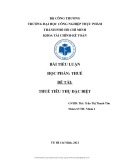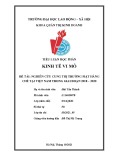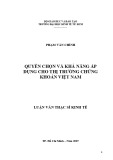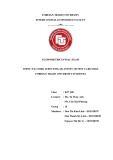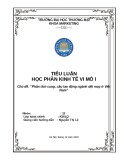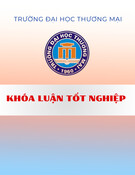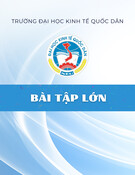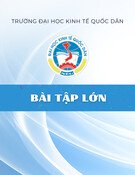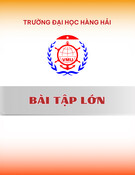
CHAPTER 1: INTRODUCTION
1.1. The urgency of the subject
The commercial banks bring into play a very important role for each economy,
contributing to attracting capital and providing loans. Business activities of
commercial banks must always ensure stability, safety and profitability. Along with
capital markets through the stock market, the money market through the banking
system is the place to provide capital to the economy. With active mobilization of
temporary idle funds in all organizations, individuals, all economic sectors
(temporarily idle capital released from the production process, from the source of
savings of the population ... ) through commercial credit, commercial banks have
provided capital for the economy, fully meet the timely reproduction process.
Thanks to the operation of the commercial banking system, especially the credit
business, enterprises have the conditions to improve their business activities,
contributing to improving the efficiency of the whole economy. Therefore, we can
assert that the main subject to meet capital needs for business activities is
commercial banks. In addition, commercial banks are tools to regulate the macro
economy. In the operation of the market economy, the operation of commercial
banks if effective will really become an effective tool for the State to regulate the
macro economy. Through credit and payment activities between commercial banks
in the system, commercial banks have contributed to expanding or reducing the
amount of money in circulation. Moreover, by granting credits to the economy,
commercial banks carry out the flow of money, gather and divide the capital of the
market effectively. Thus, stabilization of the commercial banking system plays an
important role in the financial system of Vietnam.
Since the financial crisis of 2008-2009, many experts have been interested in
studying financial instability that could lead to bankruptcy in many areas such as
Altman (1968), Altman & GCG (1977) ), Zavgren (1985). Particularly in the
banking sector there are researchs by Boyd & Graham (1986), De Nicolo (2000),
Hesse & Cihak (2007), Soedarmono & ctg (2011), Rahman & ctg (2012), Fu & ctg







